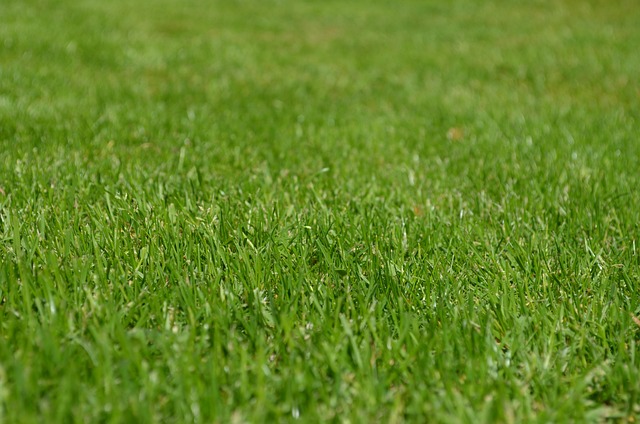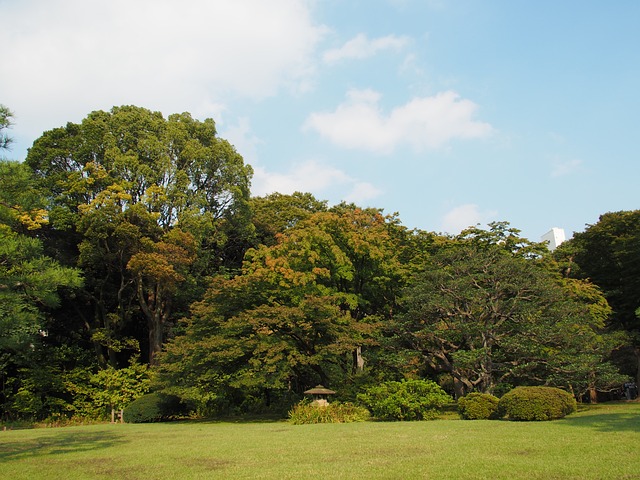Mulching and edging are essential practices in lawn care and landscaping, offering numerous advantages. Mulching suppresses weeds, conserves moisture, regulates temperature, and enriches soil while edging defines lawn boundaries, prevents mulch spread, and enhances aesthetics. Integrating these techniques improves overall landscape beauty, promotes healthier grass growth, and maintains a manicured look. Regular application of organic mulch (2-4 inches) and use of precise edging tools ensure effective weed control and crisp lines, making them crucial components for achieving a beautiful, thriving lawn and garden.
Transform your lawn into a picture of perfection with effective mulching and edging techniques—essential practices in lawn care and landscaping. This comprehensive guide explores the benefits of mulching, from improving soil health to suppressing weeds naturally. We’ll dive into various edging methods to achieve crisp, clean lines around your garden. Learn how combining these techniques can enhance overall lawn aesthetics and maintenance, ensuring a lush, well-defined outdoor space all year round.
- Understanding Mulching: Benefits and Best Practices
- Edging Techniques for Neat Lawn Boundaries
- Combining Mulching and Edging for Optimal Lawn Care
Understanding Mulching: Benefits and Best Practices

Mulching is an essential practice in lawn care and landscaping, offering a multitude of benefits for your outdoor space. By adding organic material like wood chips or straw to your lawn’s surface, mulching helps suppress weeds, conserve soil moisture, and regulate temperature extremes. This natural process also contributes to healthier grass growth by preventing soil erosion, enriching the soil with nutrients as it decomposes, and creating a favorable environment for beneficial microorganisms.
When implementing mulching techniques, best practices include applying the right amount: a 2-4 inch layer is ideal. Ensure even distribution across your lawn, avoiding piling mulch against tree trunks or near plant bases to prevent rot and pest issues. Regularly replenishing mulch helps maintain its effectiveness, especially in visible areas that may need touch-ups. This simple yet powerful method enhances the overall aesthetics and longevity of your lawn and garden, making it a valuable investment in lawn care and landscaping.
Edging Techniques for Neat Lawn Boundaries

Define your lawn’s edges with precision using various edging techniques, a crucial aspect of effective lawn care and landscaping. Manual edge trimmers are ideal for straightforward, linear boundaries, allowing for precise control over cut lines. For curved or irregular edges, consider using power edgers, which can effortlessly navigate around trees, shrubs, and other obstacles. These tools are versatile and efficient, making them a favorite among professional landscapers.
To achieve clean, crisp lines, start by removing any debris from the edging area. Then, adjust the tool’s settings according to the type of grass and desired finish. Regular maintenance will ensure your lawn’s boundaries remain defined, enhancing overall lawn care and landscaping aesthetics.
Combining Mulching and Edging for Optimal Lawn Care

Combining mulching and edging is a powerful strategy in lawn care and landscaping. Mulching involves placing organic material, like wood chips or straw, on top of the soil to retain moisture, suppress weeds, and gradually release nutrients as it decomposes. Edging, on the other hand, defines the boundary between your lawn and pathways or garden beds, creating a neat and polished look. When done together, these practices complement each other.
Edging helps to prevent mulch from spreading into unwanted areas, ensuring it stays put on your lawn. This maintains the aesthetic appeal of your landscaping while allowing the benefits of mulching, such as improved soil health and reduced weed growth, to thrive. By integrating these techniques, you can achieve a well-manicured and healthy lawn, enhancing the overall beauty of your outdoor space.
Mulching and edging are essential practices in lawn care and landscaping, offering numerous benefits such as weed suppression, moisture retention, and improved soil health. By understanding the best practices for each technique and combining them effectively, you can achieve a neat, vibrant lawn that stands out in your neighborhood. These simple yet powerful tools will not only enhance the aesthetics of your outdoor space but also contribute to its overall well-being.



